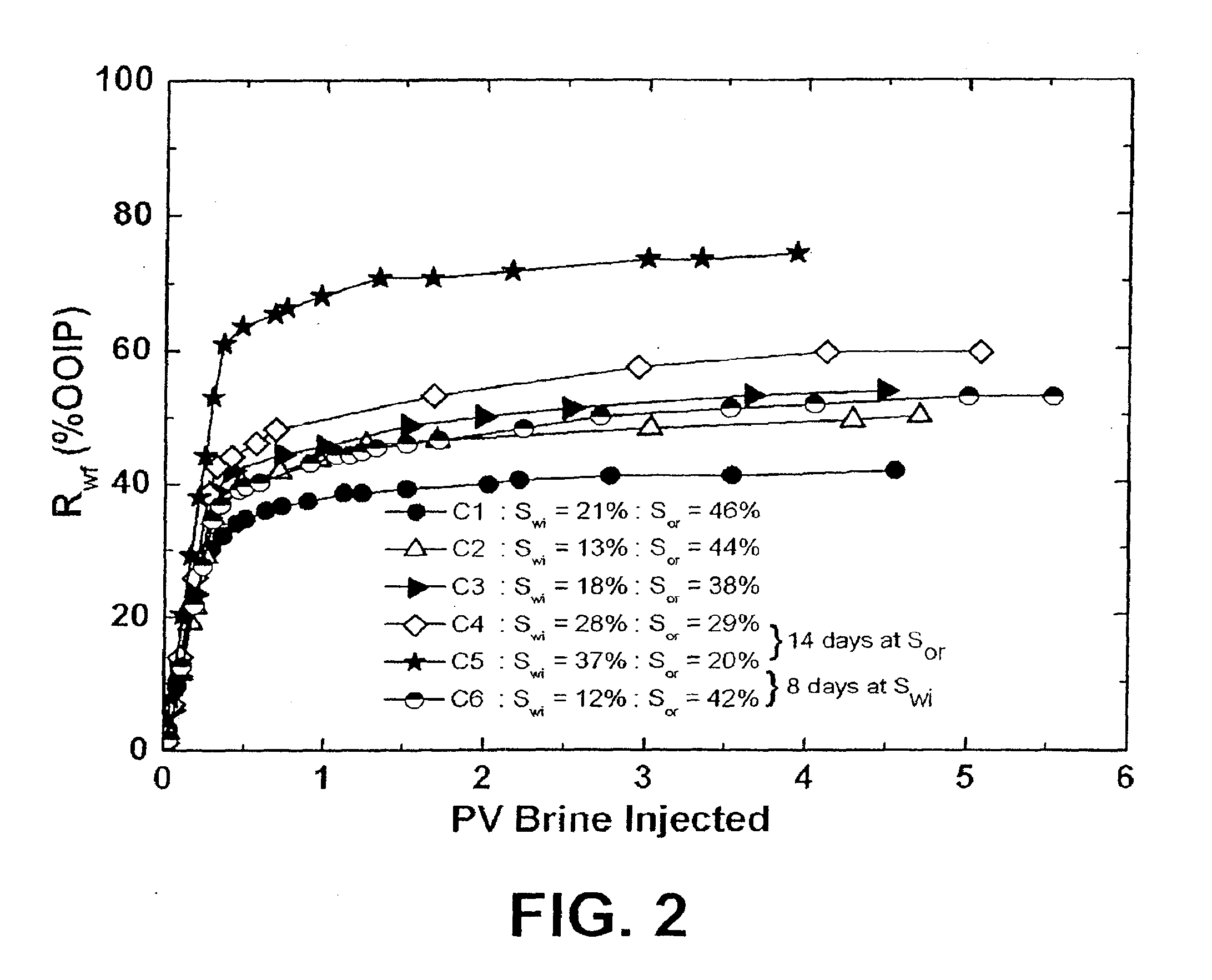Single-well diagnostics and increased oil recovery by oil injection and sequential waterflooding
a single-well, oil injection technology, applied in the direction of survey, fluid removal, borehole/well accessories, etc., can solve the problems of significant oil remaining in the reservoir, the economics of keeping the well in production may only be barely high, etc., and achieve the effect of increasing the oil recovery
- Summary
- Abstract
- Description
- Claims
- Application Information
AI Technical Summary
Benefits of technology
Problems solved by technology
Method used
Image
Examples
Embodiment Construction
[0023]Briefly, the present invention includes a method for improving oil recovery from reservoirs by reducing the residual oil saturation of oil trapped in an oil reservoir such that overall recovery is improved. The invention may be adapted to wells where the local oil saturation has different levels of mobility. In accordance with embodiments of the present invention, oil recovery may be improved by recharging the region around a previously waterflooded production or injection well with oil followed by recovery of the injected oil plus oil that was present in the reservoir after the initial waterflooding and prior to the oil injection. Oil injection may be followed by injection of water which pushes the injected oil away from the well bore to form a growing oil bank since, as a result of the second waterflooding, the residual oil in the volume swept by the oil bank is lower than the residual oil ahead of the oil bank. If the well is placed in production, a third waterflooding occu...
PUM
 Login to View More
Login to View More Abstract
Description
Claims
Application Information
 Login to View More
Login to View More - R&D
- Intellectual Property
- Life Sciences
- Materials
- Tech Scout
- Unparalleled Data Quality
- Higher Quality Content
- 60% Fewer Hallucinations
Browse by: Latest US Patents, China's latest patents, Technical Efficacy Thesaurus, Application Domain, Technology Topic, Popular Technical Reports.
© 2025 PatSnap. All rights reserved.Legal|Privacy policy|Modern Slavery Act Transparency Statement|Sitemap|About US| Contact US: help@patsnap.com



